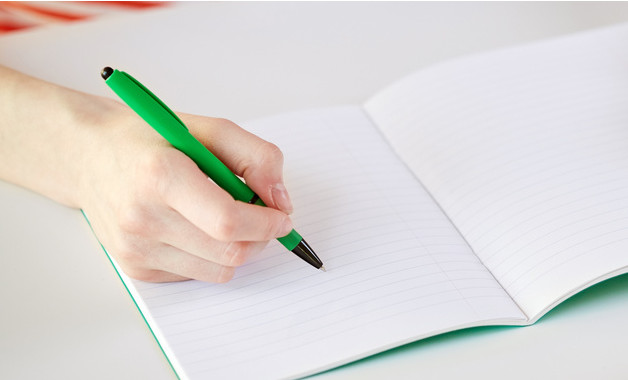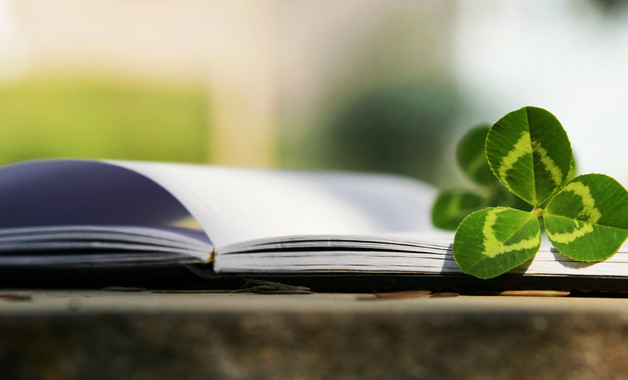小学英语知识总结(7篇范文)

第1篇 小学英语知识总结
小学英语知识总结1
一、名词
1.不可数名词,如水类,肉类,饭类等
2.可数名词有单数和复数两种形式。复数的部分规则如下:
a.一般情况下,直接加-s,如:book-books,bag-bags,cat-cats,bed-beds
b.以s.x.sh.ch结尾,加-es,如:bus-buses,box-boxes,brush-brushes,watch-watches
c.以o结尾的名词,有在加es,有的加s。一般有生命的名词,复数加es,没有生命的名
词加s,如:有生命的tomatotomatoespotatapotatoes;没有生命的:photo--photos
d.以“辅音字母y”结尾,变y为i,再加-es,如:family-families,strawberry-strawberriese.以“f或fe”结尾,变f或fe为v,再加-es,如:knife-knivesleafleavesf.不规则名词复数:
man-men,woman-women,policeman-policemen,policewoman-policewomen,child-childrenfoot-feet,.tooth-teethfish-fish,people-people,chinese-chinese,
japanese-japanese,sheepsheep,deerdeer
练习题:写出下列各词的复数形式
i_________he/she/it_________this___________that______watch_______child_______photo________diary______day________foot________book_______dress________tooth_______sheep______box_______strawberry_____peach______sandwich______dish_______bus_______man______woman_______deer_______
二.动词时态:
1、一般现在时
一般现在时基本用法介绍no.1一般现在时的功能
1.表示事物或人物的特征、状态。如:theskyisblue.天空是蓝色的。
2.表示经常性或习惯性的'动作。如:igetupatsixeveryday.我天天六点起床。3.表示客观现实。如:theearthgoesaroundthesun.地球绕着太阳转。一般现在时的构成
1.be动词:主语+be(am,is,are)+其它。如:iamaboy.我是一个男孩。
2.行为动词:主语+行为动词+(其它)。如:westudyenglish.我们学习英语。当主语为第三人称单数(he,she,it)时,要在动词后加'-s'或'-es'。
如:marylikeschinese.玛丽喜欢汉语。
no.2一般现在时的变化1.be动词的变化。
否定句:主语+benot+其它。
如:heisnotaworker.他不是工人。一般疑问句:be+主语+其它。如:-areyouastudent?-yes.iam./no,i'mnot.
特殊疑问句:疑问词+一般疑问句。如:whereismybike?2.行为动词的变化。
否定句:主语+don't(doesn't)+动词原形+(其它)。如:idon'tlikebread.
当主语为第三人称单数时,要用doesn't构成否定句。如:hedoesn'toftenplay.
一般疑问句:do(does)+主语+动词原形+其它?如:-doyouoftenplayfootball?-yes,ido./no,idon't.
当主语为第三人称单数时,要用does构成一般疑问句。如:-doesshegotoworkbybike?-yes,shedoes./no,shedoesn't.
动词第三人称单数的变化规则:
1.一般情况下,直接加-s,如:cook-cooks,milk-milks
2.以s.x.sh.ch.o结尾,加-es,如:do---does,wash-washes,watch-watches,go-goes3.以“辅音字母y”结尾,变y为i,再加-es,如:study-studies4.不规则:havehas一般现在时用法专练:
1、写出下列动词的第三人称单数
drink________go_______stay________make________look_________have_______pass_______carry____come________watch______plant_______fly________study_______brush________do_________teach_______wash_______
2、用括号内动词的适当形式填空。
1.heoften________(have)dinnerathome.2.danielandtommy_______(be)inclassone.3.we_______(notwatch)tvonmonday.4.nick_______(notgo)tothezooonsunday.5.______they________(like)theworldcup?
6.what_______theyoften_______(do)onsaturdays?
7._______yourparents_______(read)newspaperseveryday?8.thegirl_______(teach)usenglishonsundays.
9.sheandi________(take)awalktogethereveryevening.10.there________(be)somewaterinthebottle.11.mike_______(like)cooking.
12.they_______(have)thesamehobby.
13.myaunt_______(look)afterherbabycarefully.14.youalways_______(do)yourhomeworkwell.15.i_______(be)ill.i’mstayinginbed.
16.she_______(go)toschoolfrommondaytofriday.17.liutao_______(do)notlikepe.18.thechildoften_______(watch)tvintheevening.
19.suhaiandsuyang_______(have)eightlessonsthisterm.20.-whatday_______(be)ittoday?-it’ssaturday
2、现在进行时
1).现在进行时表示现在正在进行或发生的动作,也可表示当前一段时间内的活动或现阶
段正在进行的动作。
2).现在进行时的肯定句基本结构为be加动词ing.3).现在进行时的否定句在be后加not。
4).现在进行时的一般疑问句把be动词调到句首。
动词加ing的变化规则
1.一般情况下,直接加ing,如:cook-cooking
2.以不发音的e结尾,去e加ing,如:make-making,taste-tasting3.假如末尾是一个元音字母和一个辅音字母,双写末尾的辅音字母,再加ing,如:run-running,
stop-stopping
现在进行时专项练习:
1、写出下列动词的现在分词:
play________run__________swim_________make__________go_________like________write_________ski___________read________have_________sing________dance_________put_________see________buy_________love____________live_______take_________come________get_________stop_________sit________begin________shop___________2、用所给的动词的正确形式填空:
1.theboy__________________(draw)apicturenow.
2.listen.somegirls_______________(sing)intheclassroom.3.mymother_________________(cook)somenicefoodnow.4.what_____you______(do)now?
5.look.they_______________(have)anenglishlesson.6.they____________(not,water)theflowersnow.
7.look!thegirls________________(dance)intheclassroom.
8.whatisourgranddaughterdoing?she_________(listen)tomusic.9.it’s5o’clocknow.we_____________(have)suppernow10.______helen____________(wash)clothes?yes,sheis.
3、将来时态
1)、概念:表示将要发生的动作或存在的状态及打算、计划或预备做某事。句中一般有以下时间状语:tomorrow,nextday(week,day,month,year),soon,thedayaftertomorrow(后天)等。2)、基本结构:①begoingtodo;②willdo.
3)、否定句:在be动词(am,is,are)l后加not或情态动词will后加not成won’t。例如:i’mgoingtohaveapicnicthisafternoon.→i’mnotgoingtohaveapicnicthisafternoon.4)、同义句:begoingto=will
iamgoingtogoswimmingtomorrow(明天).=iwillgoswimmingtomorrow.
练习:
1.我打算明天和朋友去野炊。
i_____________________haveapicnicwithmyfriends.i________haveapicnicwithmyfriends.2.我们将要学习英语
we_____________________learnenglish.we________learnenglish.
4、一般过去时
1).一般过去时表示过去某个时间发生的动作或存在的状态,常和表示过去的时间状语连
用。一般过去时也表示过去经常或反复发生的动作。
2).be动词在一般过去时中的变化:
⑴am和is在一般过去时中变为was。(wasnot=wasn’t)⑵are在一般过去时中变为were。(werenot=weren’t)3).句中没有be动词的一般过去时的句子
否定句:didn’t动词原形,如:jimdidn’tgohomeyesterday
动词过去式变化规则:
1.一般在动词末尾加-ed,如:work__-worked,cook-cooked2.结尾是e加d,如:live____lived
3.末尾只有一个元音字母和一个辅音字母的重读闭音节,应双写末尾的辅音字母,再加-ed,如:stop-stopped
4.以“辅音字母y”结尾的,变y为i,再加-ed,如:study-studied5.不规则动词过去式:
am,is-was,are-were,do-did,see-saw,say-said,
give-gave,get-got,go-went,come-came,have-had,eat-ate,take-took,run-ran,sing-sang,put-put,make-made,read-read,write-wrote,draw-drew,drink-drank,swim-swam,sit-satcan__couldbuyboughtflyflewbeginbegan
过去时练习:
写出下列动词的过去式isam_________plant________are________
drink_________play_______go________make________does_________dance________worry________ask_____taste_________eat__________put______kick_________pass_______do________1)用be动词的适当形式填空
1.i_______atschooljustnow.
2.he________atthecamplastweek.3.we________studentstwoyearsago.4.they________onthefarmamomentago.
5.yangling________elevenyearsoldlastyear.6.there________anappleontheplateyesterday.
7.there________somemilkinthefridgeonsunday.8.themobilephone_______onthesofayesterdayevening.2)用动词的适当形式填空
1.i______(watch)acartoononsaturday.
2.herfather_______(read)anewspaperlastnight.
3.we_________tozooyesterday,we_____tothepark.(go)
4.______you_______(visit)yourrelativeslastspringfestival?5.______he_______(fly)akiteonsunday?yes,he______.6.gaoshan_______(pull)upcarrotslastnationaldayholiday.
7.i____________(sweep)theflooryesterday,butmymother______.8.what______she_______(find)inthegardenlastmorning?she__________(find)abeautifulbutterfly.
小学英语知识总结2
1.文具类单词:
book书,ruler尺子,pencil铅笔,
rubber橡皮,pen钢笔,bag包
2.课堂用语指示句型:
stand up,please.请起立。
sit down,please.请坐。
open your book.打开你们的书。
close your book.合上你们的书。
3.日常问候句型:
how are you?你身体好吗?
fine,thank you.很好,谢谢你。
good morning.早上好。
4.韵律诗:____,____,i can see._____,_____,for you and me!
5.儿歌:good morning
拓展内容:schoolbag书包
good afternoon.下午好。
good evening.晚上好
and you?你呢?
i'm fine,too.我也很好。
第2篇 小学生英语知识点总结
知识点
一、名词复数规则
1.一般情况下,直接加-s,如:book-books, bag-bags, cat-cats, bed-beds
2.以s. x. sh. ch结尾,加-es,如:bus-buses, box-boxes, brush-brushes, watch-watches
3.以“辅音字母+y”结尾,变y为i, 再加-es,如:family-families, strawberry-strawberries
4.以“f或fe”结尾,变f或fe为v, 再加-es,如:knife-knives 5.不规则名词复数: man-men, woman-women, policeman-policemen, policewoman-policewomen, mouse-mice child-children foot-feet,.tooth-teeth fish-fish, people-people, chinese-chinese, japanese-japanese
二、一般现在时
1.一般现在时表示经常或习惯性的动作,也可表示现在的状态或主语具备的性格和能力。
2.一般现在时中,没有be动词和情态动词,主语为第三人称单数的肯定句,动词要按规则加上s,主语是非第三人称单数的肯定句,动词用原形。
3.在一般现在时中,句中有be动词或情态动词时,否定句在be动词和情态动词后加not,一般疑问句将be动词或情态动词放在句首。
4.在一般现在时中,句中没有be动词或情态动词时,主语为第三人称单数的否定句在动词前加does+not (doesn’t),一般疑问句在句首加does,句子中原有动词用原形;主语为非第三人称单数,否定句用do+not (don’t),一般疑问句在句首加do,句子中动词用原形。
动词+s的变化规则
1.一般情况下,直接加-s,如:cook-cooks, milk-milks
2 .以s. x. sh. ch. o结尾,加-es,如:guess-guesses, wash-washes, watch-watches, go-goes
3.以“辅音字母+y”结尾,变y为i, 再加-es,如:study-studies
三、现在进行时
1.现在进行时表示现在正在进行或发生的动作,也可表示当前一段时间内的活动或现阶段正在进行的动作。
2.现在进行时的肯定句基本结构为be+动词ing.
3.现在进行时的否定句在be后加not。
4.现在进行时的一般疑问句把be动词调到句首。
动词加ing的变化规则
1.一般情况下,直接加ing,如:cook-cooking
2.以不发音的e结尾,去e加ing,如:make-making, taste-tasting
3.如果末尾是一个元音字母和一个辅音字母,双写末尾的辅音字母,再加ing,如:run-running, stop-stopping
四、be going to
1.be going to 表示将要发生的事或打算、计划、决定要做的事情。
2.肯定句:be going to +动词原形,如:jim is going to play football. 否定句:be not going to +动词原形,如:jim is not going to play football. 一般疑问句:把be动词调到句首,如:is jim going to play football? 特殊疑问句:疑问词+be+主语+going to+动词原形?如:what is jim going to do? 疑问词当主语时:疑问词+be+going to+动词原形?如:who is going to play football?
必备知识点
一、否定句:
表示某一否定意思。句中一定有not。
有三种可能:be动词(am、is、are、was、were)+not、情态动词(can、must、should)+ not、助动词(do、does、did) + not
如何将一个肯定的陈述句改为否定句:
1.看句中有无be动词,如有,直接在be动词后+ not。
2.看句中有无情态动词,如有,直接在情态动词后+ not。
3.如上述二者都没有,就应用助动词+ not。分四个步骤:
(1)肯定陈述句中本来是没有助动词的,要加上去,位置在主语(某人或某物)后,动词前。
(2)确定助动词用do、does还是did,根据句中动词,动词是原形的助动词就用do,动词是第三人称单数的助动词就用does,动词用过去式的助动词就有did。
(3)在助动词后加not。
(4)原句中动词假如发生变化就要恢复成原形。
强调一点,有some的要考虑是否要用any。
二、一般疑问句。
表示疑问,一般回答只有两种可能yes,……或no,……句中没有疑问词。
如何将一个肯定的陈述句改为否定句:
1.看句中有无be动词,如有,把be动词提到句首即可。
2.看句中有无情态动词,如有,把情态动词提到句首即可。
3.如上述二者都没有,就应把助动提到句首。分四个步骤:
(1)肯定陈述句中本来是没有助动词的,要加上去,位置在主语(某人或某物)后,动词前。
(2)确定助动词用do、does还是did,根据句中动词,动词是原形的助动词就用do,动词是第三人称单数的助动词就用does,动词用过去式的助动词就有did。
(3)把助动词后提到句首。
(4)原句中动词假如发生变化就要恢复成原形。
强调一点,有some的要考虑是否要用any。
三、特殊疑问句。
表示疑问,有疑问词(在开头),回答有很多种可能。
常用疑问词:
what、when、which、who、whose、why、how
如何对划线部分提问:
1.将原问句翻译为汉语(在读中要将划线部分重读)。
如:his birthday is on the 5th of may .
他的生日在五月五日。
2.用汉语进行提问。
如上句,应该问:他的生日在什么时候?
3.根据汉语将所要提问的句子补充完整。
如上句when is his birthday ?
四、祈使句
表示请求或命令别人做某事或不要做某事。
肯定祈使句一定是以动词原形开头(有时有please),否定的祈使句一定是don’t加动词原形开头(有时有please)。
把祈使句改为否定句只需在动词前加don’t即可。
必考知识点
1.人称代词
主格: i we you she he it they
宾格: me us you her him it them
形容词性物主代词:my our your her his its their
名词性物主代词: mine ours yours hers his its theirs
2.形容词和副词的比较级
(1) 一般在形容词或副词后+er
older taller longer stronger, etc
(2) 多音节词前+more
more interesting, etc.
(3) 双写最后一个字母,再+er
bigger fatter, etc.
(4) 把y变i,再+er
heavier, earlier
(5) 不规则变化:
well-better, much/many-more, etc.
3.可数词的复数形式
most nouns + s a book –books
nouns ending in a consonant +y - y+ ies a story—stories
nouns ending in s, sh, ch or x + es a glass—glasses a watch-watches
nouns ending in o +s or +es a piano—pianos a mango—mangoes
nouns ending in f or fe - f or fe +ves a knife –knives a shelf-shelves
4.不可数名词(单复数形式不变)
bread, rice, water ,juice etc.
5. 缩略形式
i’m = i am you’re = you are she’s = she is he’s = he is
it’s = it is who’s =who is can’t =can not isn’t=is not etc
6. a/an
a book, a peach
an egg an hour
7. preposition:
on, in ,in front of, between, next to, near, beside, at, behind.
表示时间: at six o’clock, at christmas, at breakfast
on monday on 15th july on national day
in the evening in december in winter
8. 基数词和序数词
one – first two-second twenty-twentieth
9. some /any
i have some toys in my bedroom.
do you have any brothers or sisters?
10. be 动词
(1) basic form: am/are/is
(2) 肯定和否定句 i am(not) from london.
my eyes are(not) small.
my hair is(not) long.
(3)一般疑问句: am i a chniese? yes, you are. no, you aren’t.
are they american? yes, they are. no, they aren’t.
is the cat fat? yes, it is. no, it isn’t.
第3篇 小学三年级英语知识点总结
小学三年级英语知识点总结
1.show me your pencil / ruler/ eraser/ crayon/ pen. 让我看看你的铅笔/尺子/橡皮/蜡笔/钢笔。
2.open your pencil--case. 打开你的铅笔盒。 close your book .合上你的书。
show me your sharpener. 让我看看你的卷笔刀。 carry your bag. 背起你的书包。
go to school . 去上学。
3.touch your head./ nose/ eye/ mouth/ ear. 摸摸你的头/鼻子/眼睛/嘴巴/耳朵。
4.clap your hands. 拍拍你的手。 snap your fingers. 打响你的手指。
wave your arms. 挥挥动你的胳膊。 cross your legs. 翘翘你的双腿。
shake your body. 扭扭你的身体。 stamp your foot. 跺跺你的脚。
5.show me your red/ blue / green / yellow / purple crayon.给我看看你的红/蓝/绿/黄/紫色蜡笔。
6.black, black. stand up. 黑色,黑色,站起来(起立)!
pink , pink. sit down. 粉红色,粉红色,坐下!
brown, brown. touch the ground. 棕色,棕色,摸摸地板。
orange, orange. touch your head. 橙色,橙色,摸摸你的头。
white, white. turn around. 白色,白色,转个圈。
7. act like a cat/ duck/ panda/ monkey/ rabbit/ dog. 模仿小猫/鸭子/熊猫/猴子/兔子/小狗表演。
8. hunt like a mouse. 像老鼠一样搜寻。 walk like a elephant. 像大象一样走路。
climb like a bear. 像狗熊一样爬。 fly like a bird. 像小鸟一样飞。
jump like a squirrel. 像松鼠一样跳。
9 .show me your hamburger. 让我看看你的汉堡包。
pass me the french fries. 把炸薯条递给我。
cut the bread. 切面包。
eat the hot dog. 吃热狗。
smell the chicken. 闻闻鸡肉。
make the cake. 做蛋糕。
10.pour the water 倒水。 smell the coffee 闻闻咖啡。
taste the tea 尝尝茶。 show me the milk 让我看看牛奶。
drink the juice 喝果汁。
11.bounce the ball.拍拍球。 fly the kite. 放风筝。
throw the plane.扔出飞机。 hold the doll.抱娃娃。
drive the car.开车。 blow up the balloons.吹气球。
第4篇 小学英语知识点总结
小学英语知识点总结
小学英语知识点总结
1、动词变为动名词的规则:
动词变为动名词,即是动词加ing。一般要遵循以下三条规则:
(1)一般情况下,在动词的后面直接加ing。如:play—playing read—reading do—doing go—going
(2)以不发音的字母e结尾的动词,要去掉不发音的字母e,再加ing。如:write—writing ride—riding make—making dance—dancing
(3)以单元音加单辅音结尾的重读闭音节,要双写最后一个辅音字母,再加ing。如:run—running swim—swimming put—putting sit—sitting
2、关于第三人称单数:
动词变为第三人称单数形式的规则:
(1)在一个句子中,如果主语人称既不是你,也不是我,而是另外的一个人,这时的'人称叫做第三人称单数。
(2)在第三人称单词的句子中,动词要使用第三人称单词形式。
(3)动词变为第三人称单数形式,要遵循以下规则:
①一般情况下,在动词的后面直接加s。如:
read--readsmake—makes write—writes
②以字母s, x, o , sh , ch结尾的动词,在词尾加es。如:do—does wash—washes teach—teaches go—goes pass—passes
③以y结尾的动词分为两个情况,以元音字母加y结尾的动词,在词尾直接加s。如:play—plays buy--buys
以辅音字母加y结尾的动词,要把y变为i,再加es.如:study--studies
④以f , fe结尾的名词,先把f,fe变为v,再加-es.
⑤特殊变化:have--has
(4)在一个第三人称单数的句子中,只要句子中出现了does或者其否定形式doesn’t.该句子中的其他动词就要使用原形。
(5)第三人称单数的肯定句在变为否定句时,在动词的前面加doesn’t. 动词恢复原形。如:he lives in beijing.---he doesn’t live in beijing.
(6) 第三人称单数的陈述句在变为一般疑问句时,用does开头,后面的动词也要变为原形。如:he lives in beijing.---does he live in beijing?
3、注意几个单词的变化:
hobby(复数形式)—hobbies have to(同义词)—must
总结二:小学英语知识点总结:代词
人称代词和物主代词
1、人称代词主格和宾格的区别:主格通常位于句中第一个动词之前(有时候位于than 之后),宾格一般位于动词或介词之后。
2、物主代词形容词性与名词性的区别:形容词性用时后面一般要带上名词,名词性则单独使用,后面不带名词。
人称代词 物主代词
主格 宾格 形容词性 名词性
我 i me 我的 my mine
你,你们 you you 你的,你们的 your yours
他 he him 他的 his his
她 she her 她的 her hers
它 it it 它的 its its
我们 we us 我们的 our ours
他(她,它)们 they them 他(她,它)们的 their theirs
总结三:小学英语语法知识点总结:名词变复数变化规则
1、一般情况下,直接加-s,如:book-books, bag-bags, cat-cats, bed-beds
2、以s、 x、 sh、 ch结尾,加-es,如:bus-buses, box-boxes, brush-brushes, watch-watches
3、以“辅音字母+y”结尾,变y为i, 再加-es,如:family-families, strawberry-strawberries
4、以“f或fe”结尾,变f或fe为v, 再加-es,如:knife-knives
5.不规则名词复数: man-men, woman-women, policeman-policemen, policewoman-policewomen, mouse-mice child-children foot-feet,、tooth-teeth fish-fish, people-people, chinese-chinese, japanese-japanese
6、不可数名词(单复数形式不变)
bread, rice, water ,juice etc.
第5篇 小学英语知识点重点难点总结(二年级)
一.知识总结
(一).喜欢和不喜欢句型:(module 1-2)
(1) a:what do you like? (你喜欢什么)
b:i like jigsaws. (我喜欢拼图)
a: what does he/she like? (他/她喜欢什么?)
b:he/ she likes bikes.(他/她喜欢自行车)
(2) a:do you like dolls? (你喜欢娃娃吗?)
b:yes, i do./no, i don‘t. (是的,我喜欢/不,我不喜欢)
(3) i do not like this party. (我不喜欢这个聚会)
he/she dosen’t like these shoes. (他/她不喜欢这双鞋)
(二).have句型 :(module 3)
(1) we have english in the morning. (早上我们有英语课)
(2) do you have maths in the afternoon? (下午你有数学课吗?)
yes, i do./ no, i don’t. (是的,我有。/不,我没有)
第6篇 小学英语知识点总结—— 数词
数词
1、基数词:表示数目多少。
注意:数字“0”可以读作“zero”,也可以读作字母“o”。
2、序数词:表示顺序先后。
基数词变序数词记忆口诀:
一、二、三,需要记,八去t,九省e,ve结尾时,f来代替,
ty结尾时,y变ie,再加th,若是几十几,前基后序别忘记。
第7篇 苏教版:小学生英语知识点总结
基础英语知识点
一、名词性物主代词
1、名词性物主代词和形容词性物主代词一样有8个:
mine yours his hers its ours yours theirs
我的你的他的她的它的我们的你们的他(她、它)们的
2、 名词性物主代词的特点:
(1)译成汉语都有'的'
(2)后面不加名词
(3)名词性物主代词=形容词性物主代词+名词
eg:1、the pen is mine 钢笔是我的(mine=my pen)
二、单数的句子变成复数的句子
把单数的句子成复数的句子很简单:变法是把能变成复数的词变成复数,但a或an要把去掉。特殊疑问词、形容词、国家及地点通常不变。
eg:把下列句子变成复数
1、 i have a car ----we have cars
2、he is an american boy. ----they are american boys
3、 it is a car ----they are cars
4、this is an eraser ----these are erasers
5、that is a backpsck -----those are backpacks
6、i'm an english teather ------we are english teathers
7、it's a new shirt---- they are new shirts
8、he's a boy ----they are boys
9、she's a singer ------they are singers
10、what'sthis in english?---- what are these in english?
必备英语知识点
1、形容词性物主代词8个:
my (我的),your(你的) ,his(他的) ,her (她的),its (它的),our (我们的),your (你们的),their(他(她、它)们的)
2、形容词性物主代词的特点:
(1)译成汉语都有'的' eg:my 我的, their 他们的
(2)后面加名词:eg:my backpack ,his name
(3)前后不用冠词 a, an ,the
this is a my eraser.(错误)
that is your a pen.(错误)
it's his the pen.(错误)
3、i(物主代词)my, you(物主代词)your ,he (物主代词)her, we (物主代词) our
英语知识
一、like一词的用法like用作及物动词,译为“喜欢”
(1)后接名词或代词,表示喜欢某人或某物。如:i like the baby very much. 我非常喜欢这个小孩。
(2)后接动名词(v. -ing),表示“喜欢做某事”,着重于习惯、爱好。如:tom likes playing football. 汤姆喜欢踢足球。
(3)后接动词不定式(to do ),表示“偶尔地喜欢做某事”,着重于某次具体的行为。如:i like reading, but i like to watch tv this evening. 我喜欢读书,但我今晚想看电视。
二、句子单数变复数,注意以下五要素
(1)主格人称代词要变成相应的复数主格人称代词,即i→we, you→you,
she,he,it→ they。
如:she is a girl. →they are girls.
(2)am,is要变为are。如:i’m a student. →we are students.
(3)不定冠词a,an要去掉。如:he is a boy. →they are boys.
(4)普通单数名词要变为复数形式。如:it is an apple. →they are apples.
(5)指示代词this,that要变为these,those。如:this is a box. →these
are boxes.
相关范文
-
10位用户关注
-
79位用户关注
最新加入范文
-
37位用户关注
-
33位用户关注
-
91位用户关注
-
98位用户关注
-
61位用户关注
-
11位用户关注
-
91位用户关注
-
95位用户关注








